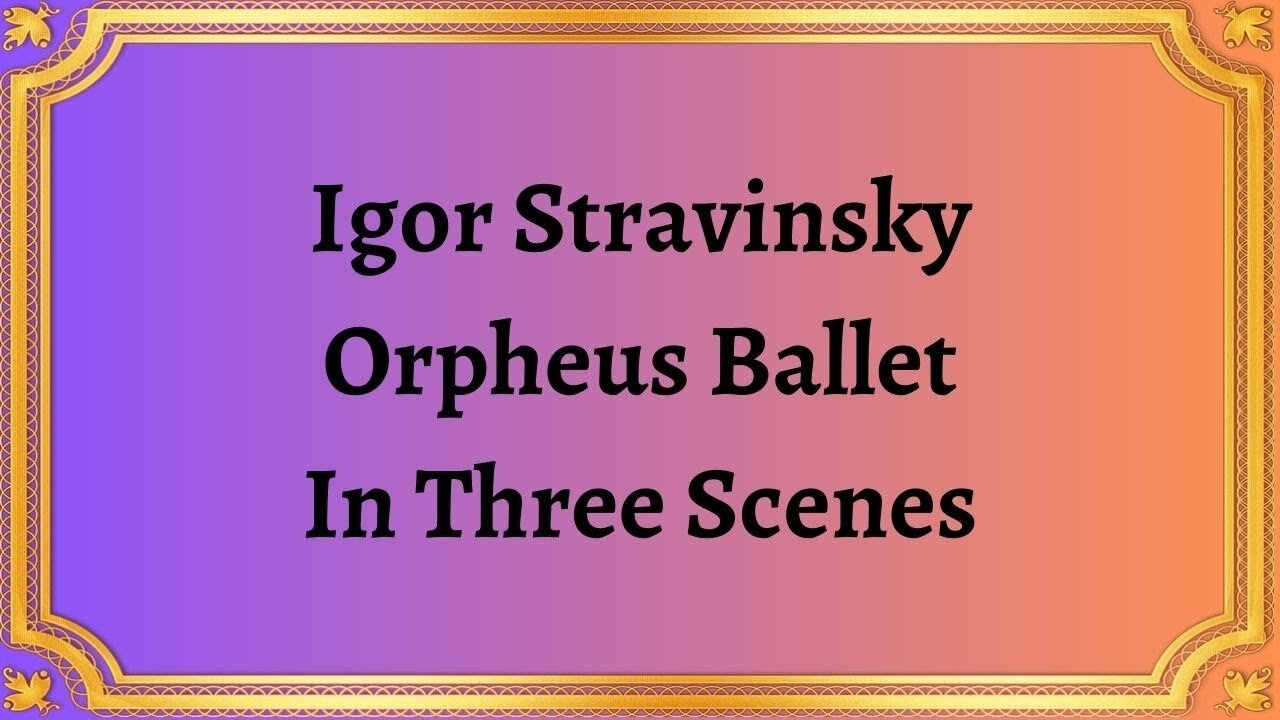Premium Only Content

Igor Stravinsky Orpheus Ballet In Three Scenes
Publication date 1950
IGOR STRAVINSKY conducting the RCA Victer Symphony Orchestra
1. Orpheus (Part 1)
2. Orpheus (Concluded)
Igor Stravinsky's "Orpheus Ballet in Three Scenes" is a classic example of his innovative and groundbreaking approach to classical music composition. First performed in 1948, the ballet was created for the New York City Ballet and is based on the ancient Greek myth of Orpheus, the legendary musician who used his music to soothe the gods and win back his beloved wife, Eurydice, from the underworld.
The ballet is divided into three scenes, each with its own distinct musical style and mood. The first scene, titled "The Orphic Greeting," begins with a majestic, slow-moving theme that leads into a powerful crescendo. This section features a rich orchestral sound, with brass and percussion instruments taking the lead to create a feeling of grandeur and awe.
The second scene, "The Calling of Eurydice," is a stark contrast to the first, with a delicate, plaintive melody that evokes a sense of longing and sorrow. Unlike the first section, this part of the ballet features more subdued instrumentation, with the strings providing a soft and haunting backdrop for the mournful song.
Finally, "The Dance of the Blessed Spirits," the third and final section of the ballet, brings the story to a triumphant conclusion. This part features a lively and celebratory melody that is full of energy and joy. It starts slowly and gradually builds up to a grand finale, with the entire orchestra coming together to create a sound that is both powerful and exhilarating.
One of the most significant aspects of "Orpheus Ballet in Three Scenes" is Stravinsky's use of innovative musical techniques. He uses dissonant harmonies, polytonality, and unconventional time signatures to create a unique and memorable sound that is both complex and captivating. His approach to music composition inspired countless other musicians and composers, and "Orpheus Ballet in Three Scenes" is considered a landmark work in the history of classical music.
In conclusion, "Igor Stravinsky Orpheus Ballet in Three Scenes" is a masterful piece of music composition that showcases Stravinsky's innovative approach to classical music. Its vibrant, powerful melodies, and unique uses of harmony and instrumentation have made it a timeless classic that continues to captivate audiences around the world. Its inspirational impact on the wider musical tradition of classical music has earned a place among the great works of the art form.
You have the opportunity to support the channel https://destream.net/live/RadSiarAl/donate
-
 16:45
16:45
Classical music_Music Inspiration
3 days agoSamuel Barber String Quartet, Op. II
502 -
 8:42
8:42
Freedom Frontline
13 hours agoDurbin’s Trump Smear Video Just HUMILIATED Him in the Senate
3.62K -
 10:56
10:56
ariellescarcella
11 hours agoThe Shocking Divide Among College Voters Sparks Worry For America
2.66K5 -
 13:09
13:09
Forrest Galante
9 hours agoWildlife Expert Reacts To Deadly Australian Animal TikToks
47K3 -
 12:08
12:08
Zoufry
1 day agoThe Mystery of Gaddafi's Final 24 Hours
8.67K7 -
 18:25
18:25
Liberty Hangout
13 days agoAnti-Ice Demonstrators Love Poop!
44.4K52 -
 9:39
9:39
MattMorseTV
15 hours ago $1.05 earnedVance just DROPPED a BOMBSHELL.
40.2K63 -
 23:47
23:47
GritsGG
1 day agoThe Forgotten Best Sniper Support AR!
15.5K3 -
 1:15:48
1:15:48
The Pascal Show
17 hours ago $0.10 earnedMUGSHOTS RELEASED! Emmanuel Haro's Parents Mugshot Released To The Public
12.2K1 -
 14:45
14:45
BlabberingCollector
20 hours agoKings Cross Station SET LEAKS! | Harry Potter HBO Show Update & News
11.8K1